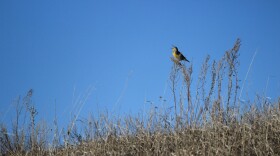The “Red,” or Red River of the North, forms the border between North Dakota and Minnesota. It begins at the confluence of the Bois de Sioux and Otter Tail rivers near Wahpeton-Breckenridge, then meanders northward through Fargo-Moorhead and Grand Forks-East Grand Forks before reaching the Manitoba border near Pembina.
In Canada, it continues northward to Winnipeg, where at “The Forks,” the Assiniboine River merges with the Red. Finally, about 30 miles north of Winnipeg, it flows into Lake Winnipeg. The total length of the Red River has been estimated to be about 400 miles.
There is another and perhaps better-known Red River, also known as the Red River of the South. It forms a portion of the Texas-Oklahoma border. That river is so named because it flows over and through red sandstone and other sedimentary rocks that are high in iron. So, as you might expect, the water has a reddish color.
The naming of the Red River of the North may be attributed to French explorer and fur trader Pierre Verendrye due to the reddish-brown silt in the water. Verendrye was perhaps the first European to travel to what is now North Dakota and established a fort near the mouth of the Red River at the south end of Lake Winnipeg in 1734.
However, it is interesting to note that Upper and Lower Red Lake lie along the margin of glacial Lake Agassiz, just north of Bemidji, Minnesota. The eastern margin of glacial Lake Agassiz is known for having high water tables which inhibit decomposition, and as a result is known for extensive peat deposits.
One of the largest peat deposits in the world is to the northeast of Upper and Lower Red Lake. The water of these peat deposits can be described as having been stained red due to tannic and humic acids from the peat.
It makes one wonder how much silt would have been in the water of the Red River back in the 1700s, well before the intensive drainage and agriculture that we see in the Red River Valley today. Was it the silt that made the water look red, or were the tannic and humic acids in the water mistaken for silt? Or was it a little of both?
—
Further reading:





